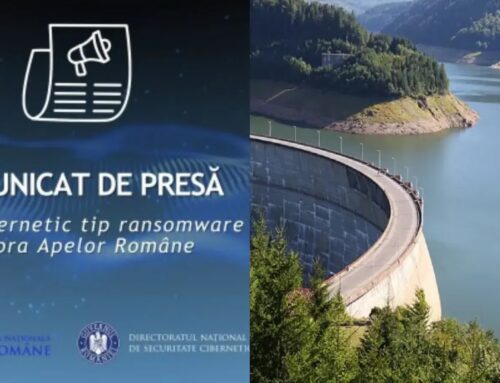
Snake Keylogger Evades Windows Defender and Scheduled Tasks to Harvest Login Credentials
Snake Keylogger’s Evasive Tactics: A Deep Dive into a Modern Threat
The digital landscape is a constant battleground, and sophisticated threats emerge with alarming frequency. Recently, a highly evasive variant of the Snake Keylogger malware has been identified, demonstrating advanced tactics to bypass traditional defenses like Windows Defender and exploit scheduled tasks. This campaign, specifically targeting Turkish defense and aerospace enterprises, underscores the evolving nature of cyber threats and the critical need for robust, multi-layered security strategies.
The Phishing Lure: Impersonating TUSAŞ
This particular iteration of the Snake Keylogger campaign leverages classic social engineering techniques, specifically highly convincing phishing emails. Threat actors are impersonating TUSAŞ (Turkish Aerospace Industries), a significant entity in its sector, to add a veneer of legitimacy to their malicious communications. This type of targeted spear-phishing significantly increases the likelihood of a victim interacting with the malicious content, as the context appears highly relevant to their professional duties.
Deceptive Deliverables: The .exe Disguise
The malware’s delivery mechanism is particularly cunning. It arrives as an executable file disguised as a common business document, using a deceptively legitimate-sounding filename such as “TEKLİF İSTEĞİ – TUSAŞ TÜRK HAVACILIK UZAY SANAYİİ_xlsx.exe”. The inclusion of “.xlsx” is a deliberate attempt to mislead users into believing they are opening a standard Microsoft Excel spreadsheet, while the actual extension “.exe” indicates an executable program. This tactic exploits common user tendencies to only glance at file extensions and trust seemingly benign document names.
Snake Keylogger: A Potent Threat
Snake Keylogger is a well-known piece of malware designed to secretly harvest sensitive information. Its primary function is to record keystrokes, capturing usernames, passwords, financial details, and other confidential data typed by the victim. Beyond keystroke logging, many keyloggers can also capture screenshots, record webcam activity, and exfiltrate files, making them incredibly dangerous for organizations handling sensitive intellectual property or classified information. The data collected is then typically exfiltrated to a command-and-control (C2) server controlled by the attackers.
Evasion Techniques: Bypassing Windows Defender and Scheduled Tasks
The latest variant of Snake Keylogger is particularly concerning due to its enhanced evasion capabilities. It has demonstrated an ability to bypass detection by Windows Defender, a widely used endpoint protection solution. Furthermore, the malware leverages scheduled tasks, a legitimate Windows feature, to establish persistence on compromised systems. By creating or modifying scheduled tasks, the keylogger can ensure it automatically runs at specific intervals or upon system reboot, making it much harder to remove and enabling prolonged data exfiltration. This persistence mechanism is a hallmark of sophisticated malware and highlights the need for advanced threat detection beyond signature-based methods.
Impact and Consequences
The consequences of a successful Snake Keylogger infection, especially in a critical sector like defense and aerospace, are severe. The harvesting of login credentials can lead to:
- Data Breaches: Access to sensitive corporate data, intellectual property, and potentially classified information.
- Financial Fraud: Compromise of banking credentials leading to unauthorized transactions.
- Supply Chain Attacks: If internal systems are compromised, attackers could potentially pivot to other organizations within the supply chain.
- Reputational Damage: Significant loss of trust and credibility for the targeted organization.
- Espionage: In the context of defense industries, the information could be used for state-sponsored espionage.
Remediation Actions
Mitigating the threat posed by advanced keyloggers like Snake requires a multi-faceted approach. Organizations, particularly those in critical sectors, should implement the following remediation actions:
- Enhanced Email Security: Deploy advanced email gateway solutions with sandboxing, attachment analysis, and URL filtering capabilities to detect and block malicious emails before they reach end-users.
- Security Awareness Training: Conduct regular, up-to-date training for all employees on identifying phishing attempts, suspicious attachments, and social engineering tactics. Emphasize the dangers of opening unsolicited emails or clicking on suspicious links.
- Endpoint Detection and Response (EDR)/Extended Detection and Response (XDR): Implement EDR or XDR solutions that provide continuous monitoring, behavioral analysis, and automated response capabilities to detect and mitigate evasive malware that bypasses traditional antivirus.
- Application Whitelisting: Restrict the execution of unauthorized applications. Only allow approved applications to run, preventing unknown executables like the disguised Snake Keylogger from launching.
- Principle of Least Privilege: Enforce the principle of least privilege for all user accounts, limiting their ability to install software or modify system settings.
- Regular Software Updates and Patching: Ensure all operating systems, applications, and security software are regularly updated with the latest patches to address known vulnerabilities.
- Multi-Factor Authentication (MFA): Implement MFA for all critical systems and services. Even if credentials are stolen, MFA can prevent unauthorized access.
- Network Segmentation: Segment networks to limit lateral movement in case of a breach.
- Scheduled Task Monitoring: Regularly audit and monitor scheduled tasks for any unauthorized or suspicious entries.
- Incident Response Plan: Develop and regularly test a comprehensive incident response plan to ensure a swift and effective response in the event of a breach.
Relevant Tools for Detection and Mitigation
| Tool Name | Purpose | Link |
|---|---|---|
| Microsoft Defender for Endpoint | Advanced EDR capabilities, behavioral analysis, and threat intelligence. | Microsoft Defender for Endpoint |
| ThreatLocker | Application whitelisting and ringfencing for endpoint security. | ThreatLocker |
| Mandiant Advantage Threat Intelligence | Actionable threat intelligence to understand attacker tactics and techniques. | Mandiant Advantage |
| MFA Solutions (e.g., Okta, Duo) | Multi-Factor Authentication for enhanced account security. | Okta, Duo Security |
| Phishing Simulation Platforms | Test employee susceptibility to phishing and improve awareness. | KnowBe4, Cofense |
Conclusion
The Snake Keylogger campaign targeting Turkish aerospace and defense is a stark reminder that cyber threats are constantly evolving, employing advanced social engineering and evasion techniques. Organizations must move beyond basic security measures and adopt a proactive, layered defense strategy. Continuous employee training, robust endpoint security, behavioral monitoring, and stringent access controls are no longer optional but essential components of a resilient cybersecurity posture in the face of increasingly sophisticated adversaries.





